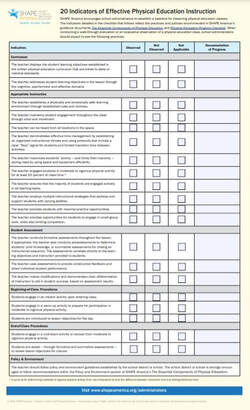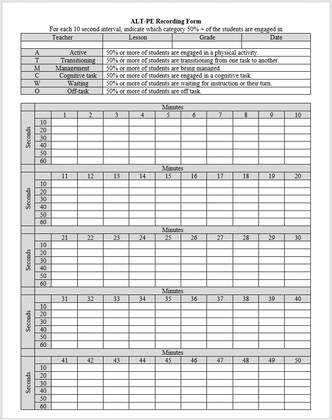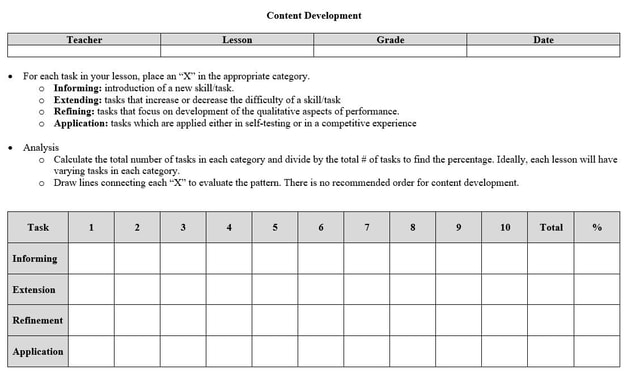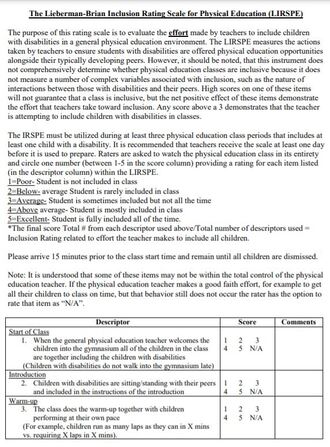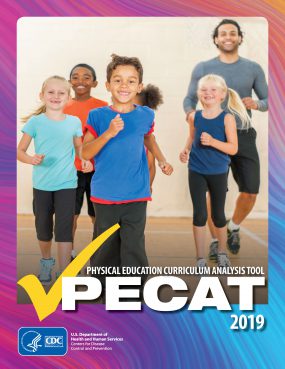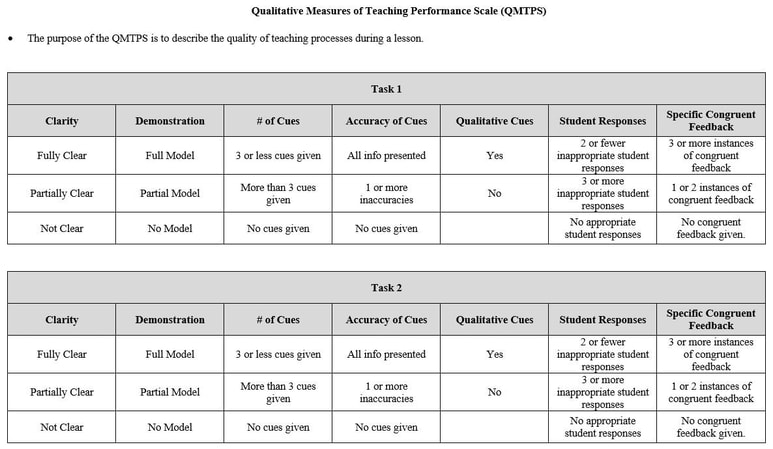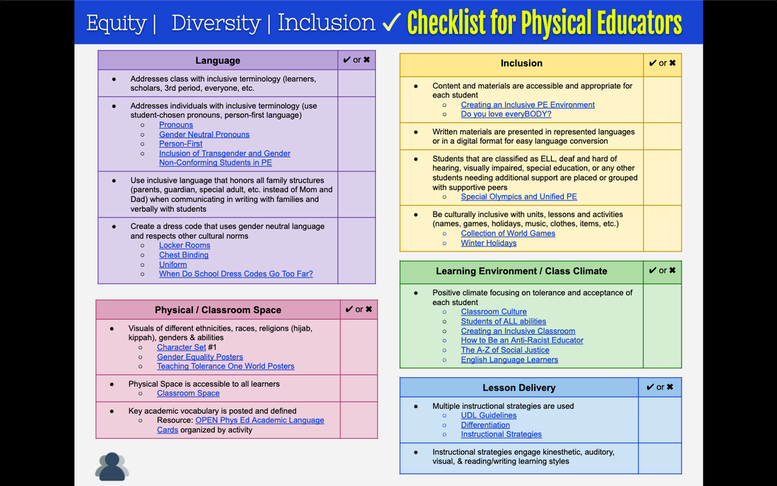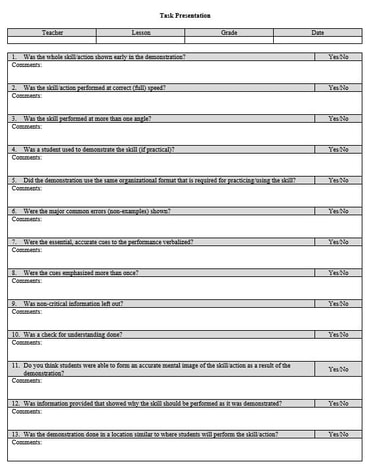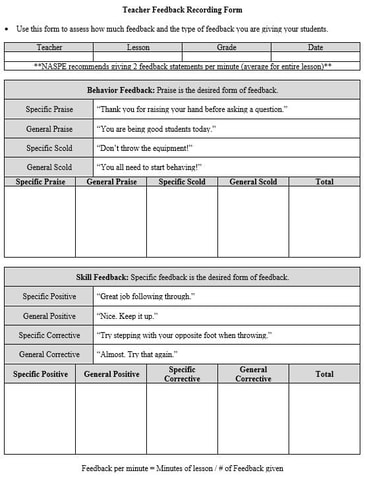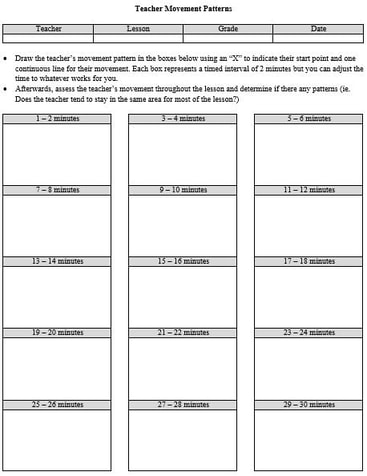Teaching Evaluation Forms for Physical Educators
Reflect, reflect, reflect! Evaluation forms serve as a way of assessing your own teaching performance and help provide a clear picture of what you are doing specifically, which may differ from your intention or what you perceive is happening.
Ways to record
1. Duration Recording: Measures the amount of time a defined behavior occurs in class.
- Teacher Behaviors: Management time, Task presentation length, and Circulating in class.
- Student Behaviors: Management time, Practice time, Academic learning time, On/off task time, and Waiting time.
2. Event Recording: Measures the frequency of defined events.
- Teacher Behaviors: Use of students' first names, Cues given, Feedback given, Questions, and Checking for understanding.
- Student Behaviors: Practice trials, Success rate, Feedback received, and Questions asked.
3. Momentary Time Sampling: Measures the occurrence and non-occurrence of behaviors at predetermined times in the lesson.
- Teacher Behaviors: Pedagogical moves and Location in class.
- Student Behaviors: % of students on task at any moment, % of students practicing at any moment, Student success rate, and Appropriate task structure.
Content is from Exhibit 2.7 - Instructional Models for Physical Education (3rd Edition), Metzler, M. (2011) by Holcomb Hathaway, Publishers. Used with permission of the publisher.
